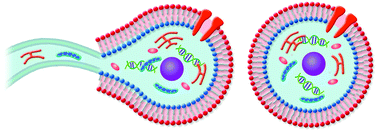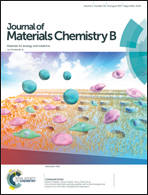Giant liposome formation toward the synthesis of well-defined artificial cells
Abstract
Giant liposomes or giant vesicles, with a diameter ranging from 1 to 100 μm, have been used to examine simple biophysical and biochemical processes in isolation from living cells. The gentle hydration method is a traditional method for giant liposome formation, and has been widely used because this method can easily produce giant liposomes in sufficient amounts needed for experiments. Well-defined artificial cell membranes that mimic cell membrane environments are needed to investigate complex biological functions in giant liposomes. However, in this method, it is difficult to control the liposome size, the encapsulation concentration, and the asymmetry of the phospholipid assembly. To solve these problems, many researchers have recently developed novel methods based on microfluidic technologies for giant liposome formation. In this review, we provide an overview of giant liposome formation using microfluidic technologies. We also summarize the properties of each microfluidic technology in giant liposome formation, including its effects on the monodispersion, encapsulation efficiency, size range, and asymmetry of membranes. Moreover, we introduced biological applications of the giant liposomes formed by the microfluidic technologies.

- This article is part of the themed collection: Recent Review Articles


 Please wait while we load your content...
Please wait while we load your content...